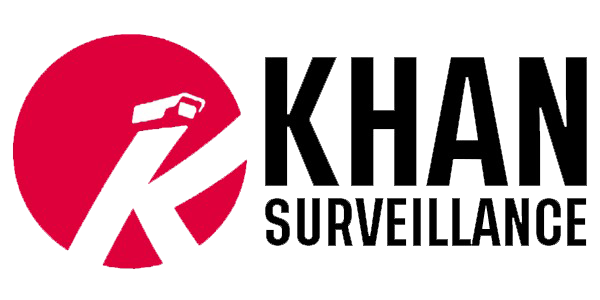Every business has unique security needs, and a one-size-fits-all approach rarely provides the level of protection necessary to safeguard assets, employees, and sensitive information. Designing a custom security solution tailored to your business ensures you’re covering all bases and addressing specific vulnerabilities. In this guide, we’ll walk through the essential steps for creating a custom security solution that keeps your business safe and secure.
1. Conduct a Thorough Security Assessment
The first step in designing a custom security solution is to understand your business’s specific risks and vulnerabilities. Conducting a comprehensive security assessment will help you identify areas that need attention and determine the level of security required for each part of your business.
● Identify Key Areas: Evaluate critical areas, such as entry points, storage areas, cash handling zones, data centers, or employee-only areas. Each will have different security needs.
● Assess Current Security Measures: Take stock of any existing security systems or protocols. Determine what’s working well and where there are gaps or inefficiencies.
● Evaluate Risks: Consider potential security threats, including theft, vandalism, unauthorized access, cyber threats, and environmental hazards (e.g., fire, flooding). Why It Matters: A thorough assessment helps you create a targeted security plan, ensuring resources are allocated efficiently to areas that need them most.

2. Define Your Security Goals and Objectives
Once you understand your business’s vulnerabilities, define clear goals for your security system. Knowing what you want to achieve will guide your decisions throughout the design process.
● Identify Key Objectives: Do you want to prevent unauthorized access, enhance employee safety, secure sensitive data, or monitor customer activity?
● Set Measurable Goals: Set measurable goals, such as reducing incidents of unauthorized access by a certain percentage or improving emergency response time.
● Consider Regulatory Requirements: Ensure your security system meets any industry-specific regulations or legal obligations, such as data protection or privacy laws. Why It Matters: Clearly defined objectives ensure that your custom security solution is designed to address your business’s specific needs effectively and comprehensively.
3. Select the Right Security Components
Customizing your security solution means choosing the right combination of components. Here’s an overview of key security elements to consider:

A. Surveillance Cameras
● Purpose: Deter potential intruders, monitor activity, and gather video evidence.
● Types: Choose from dome, bullet, PTZ (pan-tilt-zoom), and IP cameras, based on indoor or outdoor needs, camera range, and level of detail required.
● Features: Look for features like high resolution, night vision, and remote access for real-time monitoring.
B. Access Control Systems
● Purpose: Restrict entry to authorized personnel and protect sensitive areas.
● Types: Keycard systems, biometric readers, PIN pads, or mobile app-controlled smart locks.
● Features: Multi-factor authentication for high-security areas, time-based access for specific zones, and integration with other security systems.
C. Alarm Systems
● Purpose: Detect and deter intrusions, unauthorized access, and emergency situations.
● Types: Intrusion alarms, fire alarms, environmental alarms (e.g., for smoke or gas leaks).
● Features: Connect alarms to a central monitoring service or mobile alerts for immediate response.
D. Cybersecurity Solutions
● Purpose: Protect digital assets and prevent unauthorized access to sensitive data.
● Components: Firewalls, network security monitoring, data encryption, and anti-virus software.
● Features: Integration with physical security measures for a comprehensive solution, such as monitoring access logs in real time.
E. Environmental Sensors
● Purpose: Detect hazards like smoke, fire, carbon monoxide, or flooding.
● Types: Smoke detectors, water leak sensors, carbon monoxide detectors.
● Features: Connect to your central security system for real-time alerts and automated emergency response.
4.Consider System Integration for Seamless Operation
For a fully functional and streamlined security solution, your components should work
together seamlessly. Integrated security systems allow for centralized control, efficient
monitoring, and rapid responses to security incidents.
● Unified Control Panel: Choose a control panel that allows you to manage cameras,
alarms, and access control from a single dashboard.
● Automation and Smart Features: Integrate automation features, such as automatically locking doors when the alarm is armed or activating cameras when motion is detected.
● Remote Access: Ensure your system allows remote access via smartphone or computer, enabling you to monitor and control your security setup from anywhere. Why It Matters: Integrated systems simplify security management, providing more efficient operation and faster incident response
5.Plan for Future Expansion and Scalability
As your business grows, so will your security needs. Design a system that can adapt to
changing requirements without needing a complete overhaul.
● Modular Design: Choose modular components that can be easily added or removed as needed.
● Cloud-Based or Scalable Platforms: Consider cloud-based or scalable systems, particularly for data storage or remote monitoring, which are easy to expand.
● Expandable Access Control and Surveillance: Select access control and camera systems that allow for additional users, cameras, or access points to be added as the business expands. Why It Matters: Scalability ensures that your security solution can grow with your business, protecting new assets and facilities without costly upgrades.
6.Develop Clear Security Protocols and Training
The effectiveness of any security system depends on proper use. Establish clear protocols
for employees and ensure they understand how to operate and interact with the security
measures in place.
● Access Control Policies: Define who has access to specific areas and establish clear procedures for issuing and revoking access credentials.
● Incident Response Plans: Create response plans for various scenarios, such as unauthorized access, intrusions, or emergency evacuations.
● Regular Training: Train employees on security protocols, such as using access control systems, reporting suspicious activity, and responding to alarms. Why It Matters: Proper training and clear protocols aximize the effectiveness of your security solution and ensure that employees know how to respond in case of an incident.
7.Establish a Maintenance and Support Plan
A custom security solution requires regular maintenance to ensure it remains fully
operational and up-to-date. Schedule routine maintenance and updates for all components.
● Software and Firmware Updates: Regularly update software for security cameras, access control systems, and any other digital components to protect against cyber threats.
● Physical Inspections: Inspect physical equipment, such as cameras and sensors, to ensure they’re working correctly and are free from damage or tampering.
● 24/7 Support: Work with a security provider that offers 24/7 support and troubleshooting to resolve issues quickly and minimize downtime. Why It Matters: Routine maintenance ensures that your security system remains effective and that any vulnerabilities are addressed before they can be exploited.
8.Test and Evaluate Your Security Solution Regularly
After implementation, regularly test and evaluate your security system to ensure it’s
performing as expected. Simulate different scenarios, such as unauthorized access or
emergency situations, to gauge response times and system effectiveness.
● Periodic Drills: Conduct security drills with employees to practice response protocols and identify any gaps.
● System Reviews: Perform regular reviews of access logs, incident reports, and video footage to identify trends or potential areas for improvement.
● Feedback Loop: Collect feedback from employees and security personnel, and adjust protocols and systems as necessary to improve overall security.
Why It Matters: Regular evaluation helps you stay proactive, ensuring your system adapts to new security challenges and continues to provide the highest level of protection.
Conclusion
Designing a custom security solution for your business requires a thoughtful, strategic approach that considers your unique vulnerabilities, operational needs, and growth plans. From assessing security risks to choosing the right technology and ensuring seamless integration, each step plays a vital role in creating a robust security solution tailored to your business. By investing in a well-designed security system, you protect your assets, safeguard your employees, and create a safer environment that supports your company’s success.
Ready to build a security solution tailored to your business needs?
Contact Khan Surveillance today to discuss your requirements and explore our range of custom security solutions designed to keep your business safe and secure.
